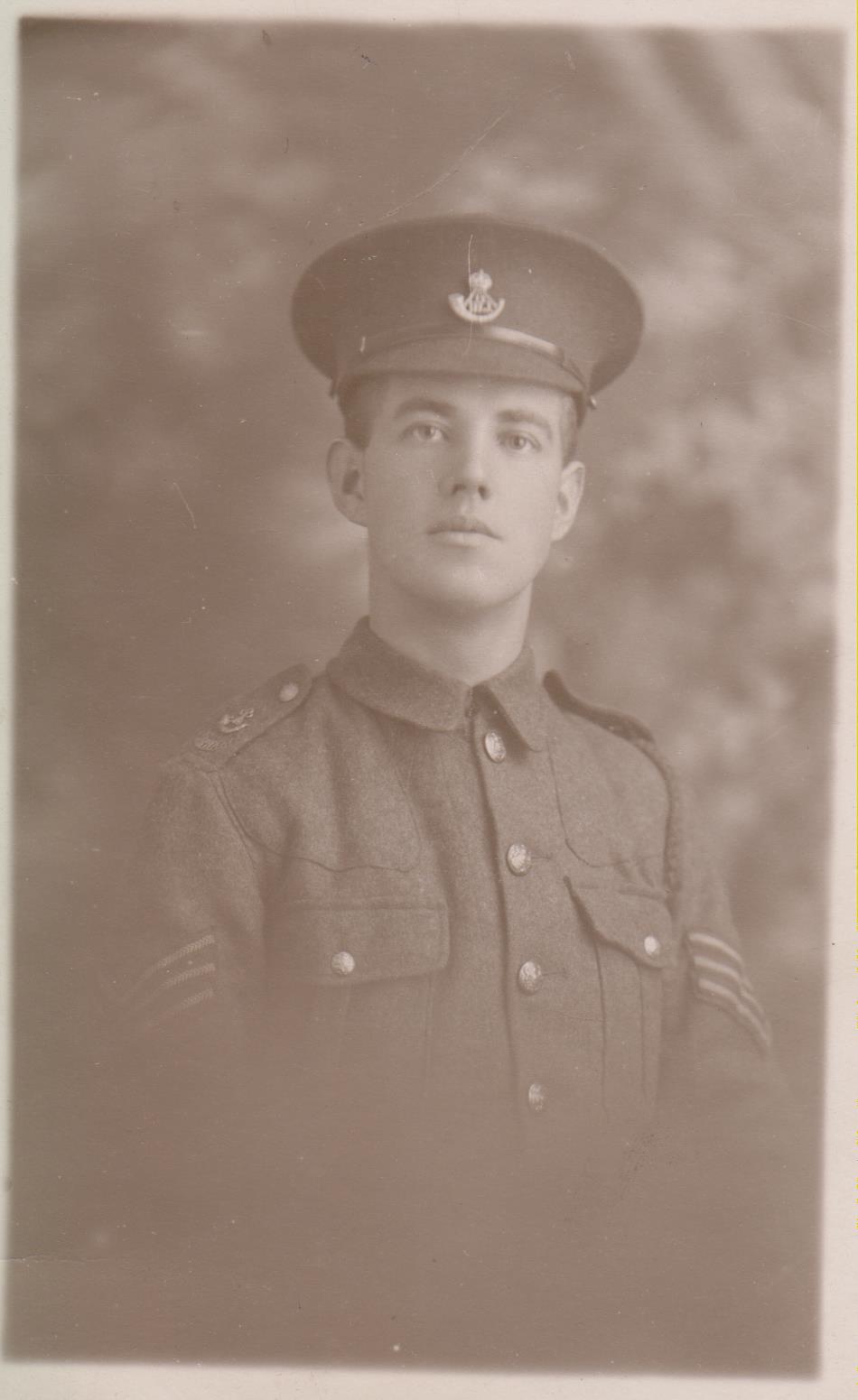
Information submitted by Mrs Drury of Richmond.
Arthur Selwyn Morley MC was one of nine children of a Weardale hill farmer who sold up in 1894 and moved to Houghton-le-spring, County Durham. Arthur ran with the Houghton and District Harriers. When war broke out Arthur and three of his five brothers joined up. His regiment was the Durham Light Infantry and he did his training at Bullswater Camp, Woking, Surrey when he was a Lance Corporal in 1914, before he proceeded to the Flanders trenches. On one of his precious leaves he married in haste, as many soldiers did who had seen the countless deaths and injuries and knew their own chances of survival were not good.
On one occasion in the trenches Arthur took command of his company, being a temporary Second Lieutenant, when senior officers became casualties. He led several attacks on an enemy position and behaved with great coolness and courage until his battalion was relieved. For this conspicuous gallantry he was awarded the Military Cross, but only weeks later he was killed and never got the chance to see his daughter.
His name is on the Menin Gate. His elder brother William had a son soon after Arthur’s death and named that son for Arthur.

Explore more memories from the ribbon
-
Lt Turnbull
Sumbitted by John Young. My great uncle David Stevens Gibson Turnbull, the elder brother of my grandmother, was born in Edinburgh on 7th September 1890. Educated at The Edinburgh Academy and Uppingham School he went on to Edinburgh University. There he learned to fly, although he did not qualify as a pilot at that stage. He married early in 1914 and emigrated to Australia where he planned to start life in Harvey, West Australia, as a fruit farmer. However, following the outbreak of war on 4th August 1914, he returned to Scotland to fight for his country. Initially he joined the Black Watch as the family had strong connections with my home town of Auchterarder in Perthshire. He was posted to 3/6th Battalion one of the sister battalions to that in which his brother-in-law (Major TE Young) was already serving. However, he had the flying bug and on 25th March 1916 he joined the Royal Flying Corps. He initially trained as an Observer but after a short period with No3 squadron RFC in France he returned to train as a pilot. He gained his pilot’s licence at Shoreham on 5th June 1916. He joined No 10 Squadron RFC, equipped with BE 2c aircraft, on 8th July 1916 and a few days later made his first operational sortie. He flew on operations for the next 7 months; engaged in artillery spotting, light bombing and aerial photography. Having survived this operational tour he was posted back to England for duty as a…
-
Henry Parker
Henry Parker In October 2015 the Green Howards Museum was contacted by the Ministry of Defence’s Joint Casualty and Compassionate Centre (JCCC). Human remains had been found in a field to the north- east of the village of Martinpuich on the Somme. The JCCC wanted to know if we could do anything to help identify this unknown soldier. We looked at events around Martinpuich between 25 and 27 September 1916. 77 men were lost, whilst an additional 319 Officers and Other Ranks were either wounded, or listed as ‘missing’. The remains could have belonged to any one of a potential 396 men. Through a process of elimination using research and archive information, we produced a shortlist of 12. To get any further, science needed to play its part. The Forensic team from JCCC collected DNA from the femur of the remains. DNA was taken from the next of kin of our shortlisted missing soldiers who had agreed to take part in the process. The remains were positively identified as those of 3183 Private Henry Parker, born 29th September 1893 in Weavererthorpe, in the Yorkshire Wolds. He was killed in action, aged 22, during the Battle of the Somme on 26 September 1916. Shoulder badges, uniform buttons, a belt buckle and clip, bullet and cut throet razor were found with the remains of Private Henry Parker – these are now on display at the museum. He was reburied with full military honours in Warlencourt Cemetary in France on 17th May 2017….
-
William Smith
Maureen Hunt told us about her grandfather, William Smith. William was born around 1883 in Wirksworth, Derbyshire and worked as a bath attendant at Matlock before the war. He volunteered early in the war and possibly joined the High Peak Rifles (later 6th battalion, Sherwood Foresters). He recounted to his family the horrors of war, having fought at the Battle of Ypres. Later in life he complained of chest pains as a result of having been gassed in the trenches. He was taken prisoner by the Germans on 21 March 1918, during the German Spring Offensive. He did not return to England until 1919. Gardening became a favourite pastime, helping him to cope with the mental and physical scars of war. William died in 1962 at almost 80 years of age.
